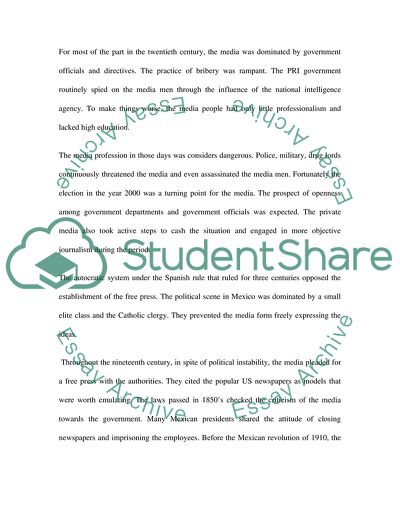Cite this document
(Newspapers and Radio After the Revolution in Mexico: Changes in the Research Paper, n.d.)
Newspapers and Radio After the Revolution in Mexico: Changes in the Research Paper. Retrieved from https://studentshare.org/politics/1745122-political-behavior-of-mexico-and-the-media
Newspapers and Radio After the Revolution in Mexico: Changes in the Research Paper. Retrieved from https://studentshare.org/politics/1745122-political-behavior-of-mexico-and-the-media
(Newspapers and Radio After the Revolution in Mexico: Changes in the Research Paper)
Newspapers and Radio After the Revolution in Mexico: Changes in the Research Paper. https://studentshare.org/politics/1745122-political-behavior-of-mexico-and-the-media.
Newspapers and Radio After the Revolution in Mexico: Changes in the Research Paper. https://studentshare.org/politics/1745122-political-behavior-of-mexico-and-the-media.
“Newspapers and Radio After the Revolution in Mexico: Changes in the Research Paper”, n.d. https://studentshare.org/politics/1745122-political-behavior-of-mexico-and-the-media.


